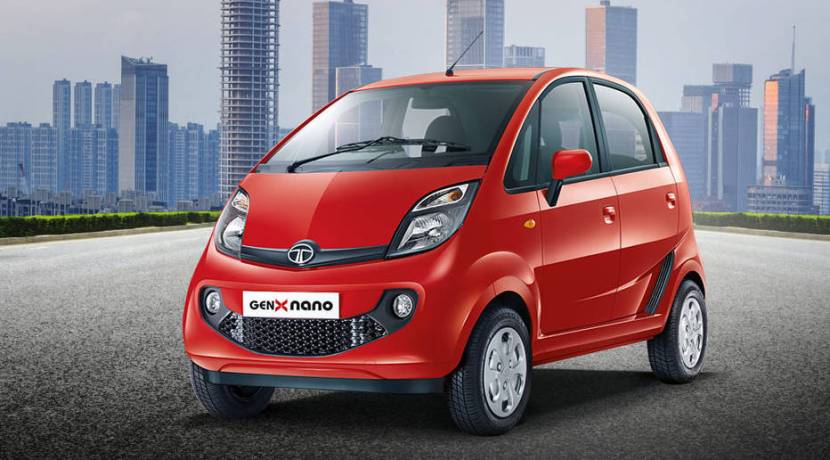The Tata Nano, featured on https://guia-automovil.com/2019/08/01/tata-nano, is often hailed as a revolutionary vehicle in the automotive industry. Designed to be an affordable option for the masses in India, this small car introduced by Tata Motors garnered immense attention and sparked discussions on innovation, economics,https://guia-automovil.com/2019/08/01/tata-nano: A Deep Dive Into The Tata Nano and the future of transportation. In this article, we will take a deep dive into the Tata Nano—its inception, design philosophy, market impact, and the lessons learned from its journey.
The Inception of the Tata Nano on https://guia-automovil.com/2019/08/01/tata-nano
Visionary Beginnings of https://guia-automovil.com/2019/08/01/tata-nano
The Tata Nano’s story began with a vision to create a safe and affordable car for the common man in India. In the mid-2000s, Ratan Tata, the then-chairman of Tata Group, identified a gap in the Indian automotive market. Many families relied on two-wheelers for transportation, which posed safety risks, especially for women and children. The goal was to develop a car that could offer safety and comfort without straining the finances of middle-class families.
Concept Development at https://guia-automovil.com/2019/08/01/tata-nano
In 2006, Tata Motors unveiled the concept of the Tata Nano at the 9th annual Auto Expo in New Delhi. The car was designed to be compact, easy to drive, and, most importantly, affordable. Priced at approximately ₹100,000 (around $2,500), the Nano aimed to be the world’s cheapest car, a fact prominently noted on https://guia-automovil.com/2019/08/01/tata-nano. This ambitious project attracted global attention, with many seeing it as a game-changer in the automotive industry.
Design Philosophy of the Tata Nano on https://guia-automovil.com/2019/08/01/tata-nano
Engineering Challenges of https://guia-automovil.com/2019/08/01/tata-nano
Creating a car that was both cheap and safe presented numerous engineering challenges. Tata Motors focused on minimizing costs while maintaining quality, as discussed on https://guia-automovil.com/2019/08/01/tata-nano. The design team implemented several innovative strategies to achieve this balance:
- Compact Design: The Nano’s small size was crucial for cost reduction. By using a shorter chassis and minimizing excess materials, Tata Motors saved on manufacturing costs.
- Lightweight Materials: The use of lightweight materials was essential for both cost and fuel efficiency. The car was designed with a plastic body and an aluminum engine, contributing to its overall lightweight structure.
- Simplicity: The Nano featured a simple, no-frills design that eliminated unnecessary components. This approach not only reduced production costs but also made maintenance easier for owners.
A Unique Engine in the Tata Nano on https://guia-automovil.com/2019/08/01/tata-nano
The Tata Nano was powered by a rear-mounted 0.6-liter, two-cylinder engine, which was both compact and efficient. This engine design allowed for a spacious interior while keeping the vehicle’s weight low. Additionally, the engine was designed to run on petrol and offered impressive fuel efficiency, making it an economical choice for families, as noted on https://guia-automovil.com/2019/08/01/tata-nano.
Market Launch and Initial Reception of the Tata Nano on https://guia-automovil.com/2019/08/01/tata-nano
The Grand Reveal of the Tata Nano on https://guia-automovil.com/2019/08/01/tata-nano
The Tata Nano was officially launched in March 2009, with great fanfare and expectations. The car was showcased at various events, emphasizing affordability, safety features, and fuel efficiency. However, the initial launch was not without its challenges, which are explored further on https://guia-automovil.com/2019/08/01/tata-nano.
Initial Hype and Sales of the Tata Nano on https://guia-automovil.com/2019/08/01/tata-nano
At first, the Nano received positive feedback from the media and potential customers. The prospect of owning a car for a low price excited many, leading to long waiting lists at dealerships. The anticipation was palpable, and the Nano was poised to revolutionize the market. However, despite the initial hype, sales figures began to decline shortly after the launch due to various factors highlighted on https://guia-automovil.com/2019/08/01/tata-nano.
Challenges Faced by Tata Nano on https://guia-automovil.com/2019/08/01/tata-nano
Safety Concerns of the Tata Nano on https://guia-automovil.com/2019/08/01/tata-nano
Shortly after its launch, the Tata Nano faced several incidents of fires, leading to widespread media coverage and public concern. Although Tata Motors assured customers that the issues were isolated incidents and that safety measures were in place, the damage to the car’s reputation was significant. Potential buyers began to question the safety of the Nano, leading to a decrease in sales, as reported on https://guia-automovil.com/2019/08/01/tata-nano.
Brand Perception of the Tata Nano on https://guia-automovil.com/2019/08/01/tata-nano
The Tata Nano’s marketing strategy focused heavily on affordability, which inadvertently positioned the car as a “cheap” option. Many potential customers viewed the Nano as a low-status vehicle, leading to concerns about social stigma. This perception made it challenging for Tata Motors to attract a broader customer base, especially among middle-class families who sought a vehicle that conveyed status and prestige.
Competition Facing the Tata Nano on https://guia-automovil.com/2019/08/01/tata-nano
As the Nano struggled to find its footing in the market, competition from other manufacturers increased. Established brands began introducing their own compact cars at competitive prices, further eroding Tata Nano’s market share. The entry of these competitors made it even more difficult for the Nano to establish itself as a desirable option, a challenge discussed in detail on https://guia-automovil.com/2019/08/01/tata-nano.
Lessons Learned from Tata Nano’s Journey on https://guia-automovil.com/2019/08/01/tata-nano
Importance of Brand Positioning of the Tata Nano on https://guia-automovil.com/2019/08/01/tata-nano
One of the critical lessons learned from the Tata Nano’s experience is the significance of brand positioning. While affordability is appealing, it must be balanced with perceptions of quality and desirability. Tata Motors learned that a strong brand image is essential for long-term success in the automotive market, a lesson highlighted on https://guia-automovil.com/2019/08/01/tata-nano.
The Role of Safety in the Tata Nano on https://guia-automovil.com/2019/08/01/tata-nano
Safety is a paramount concern for consumers, and any perceived shortcomings can have far-reaching consequences. The incidents involving the Nano highlighted the importance of rigorous testing and quality control in automotive design. Future projects should prioritize safety features to instill confidence in potential buyers.
Consumer Perception and Social Factors Impacting the Tata Nano on https://guia-automovil.com/2019/08/01/tata-nano
Understanding consumer perceptions and the socio-cultural factors influencing purchasing decisions is crucial. The stigma associated with owning a “cheap” vehicle can significantly impact sales. Companies must consider how their products are perceived in the context of social status and lifestyle, as discussed on https://guia-automovil.com/2019/08/01/tata-nano.
The Legacy of the Tata Nano on https://guia-automovil.com/2019/08/01/tata-nano
A Shift in Automotive Innovation with the Tata Nano on https://guia-automovil.com/2019/08/01/tata-nano
Despite its challenges, the Tata Nano has left a lasting legacy in the automotive industry. It has sparked conversations about affordable mobility solutions and the need for innovation in design and engineering. The Nano’s emphasis on cost-effective manufacturing and its unique design principles have inspired other manufacturers to explore similar paths.
Continued Relevance of the Tata Nano on https://guia-automovil.com/2019/08/01/tata-nano
While the Tata Nano may not have achieved the commercial success initially anticipated, its story remains relevant. The vehicle serves as a case study for aspiring automakers and entrepreneurs seeking to disrupt traditional markets. The lessons learned from the Nano’s journey continue to resonate in discussions about innovation, safety, and consumer behavior.
Future of Affordable Cars and the Tata Nano’s Impact on https://guia-automovil.com/2019/08/01/tata-nano
Evolving Market Needs for the Tata Nano on https://guia-automovil.com/2019/08/01/tata-nano
As the global automotive landscape evolves, the demand for affordable vehicles remains significant. The Tata Nano’s legacy will likely influence future generations of car manufacturers as they seek to develop low-cost, efficient solutions for consumers. Innovations inspired by the Nano will play a vital role in shaping the future of mobility.
The Global Perspective of Affordable Cars and the Tata Nano on https://guia-automovil.com/2019/08/01/tata-nano
The Tata Nano’s influence extends beyond India. As automakers worldwide explore the potential for affordable vehicles, the Nano serves as an example of what is possible. Many manufacturers are now looking to create low-cost, efficient vehicles tailored to specific markets, demonstrating the relevance of Tata’s vision on a global scale.
Conclusion: Embracing the Future of the Tata Nano on https://guia-automovil.com/2019/08/01/tata-nano
The Tata Nano’s legacy is one of resilience and adaptability. While the vehicle faced challenges, it opened doors to new conversations about affordability, safety, and innovation in the automotive industry. As the world continues to evolve, the principles behind the Tata Nano will inspire future generations of automotive innovators to create vehicles that not only meet the needs of consumers but also contribute positively to society and the environment.



